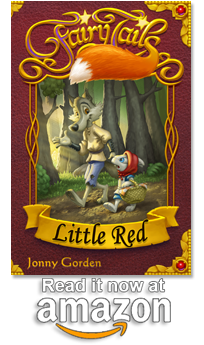It seems with the ability to create animation on computer more easily than in the past, and the advent of 3D animation, that an important working relationship has been lost, that of the master and the apprentice.
The way most animation is created these days is that each animator is assigned an entire scene. They animate all the characters in that scene from layout to completion. In this environment one of the biggest battles is dealing with different levels of skill and experience amongst animators. Scenes can be allocated to different animators based on their strengths, but a noticeable difference in the animation quality between scenes is almost inevitable. As animation supervisor I’ve struggled with this in the shows I’ve worked on, and I see it in almost all 3D animated tv and all but the best feature films.
So what can be done to address this problem?
One solution is to re-introduce the traditional master and apprentice relationship. Not only used for animation, the master and apprentice relationship has existed for thousands of years in almost every craft and trade. So why has it recently fallen out of favor for animation? To answer that we must first look at the roles of master and apprentice for animation before computers, when every frame was drawn by hand.
Masters and Apprentices in Traditional Animation
Traditionally an animator would have an assistant (or sometimes 2 or 3). The assistant would, in most cases, be an animator in training, learning the art and craft of animation from the animator. The animator would draw the main drawings, the key poses that capture the acting, the timing and the essence of the shot. The assistant would then draw the frames between the key poses, or the inbetweens. Eventually the assistant would be skilled enough to move up in rank and become an animator themselves, with assistants of their own to train.
There are two main reasons why this relationship developed:
1. In the early days there were no animation schools. Art and design were taught at school, but animation had to be learned on the job, and with a growing industry it was important to have new animators rising through the ranks.
2. An animator could get much more done with an assistant doing the inbetweens.
So it’s easy to see why it’s been forgotten. At first glance the reasons for the master apprentice relationship seem to be obsolete:
1. There are now hundreds of animation schools, both at colleges and online, so animators don’t need to learn on the job any more… or do they?
The trouble with all but the very best animation courses is that with such a limited time many students come out knowing how to use the software, but with little experience or skill in the art of animation. Acting, posing and timing are all skills that require practice and experience, and few students come out of school ready to be thrown into production.
2. With computer animation, especially 3D animation, the computer creates the inbetweens for us. So animators don’t need assistants any more…. or do they?
There is still a big difference between the stage of blocking out a scene, providing the major poses and timing, and the stage of polishing and secondary motions. Blocking out a scene still requires much more experience than tweaking, polishing and secondary motion. If an animator is doing both, since each stage takes roughly the same length of time, an experienced animator is under-utilized for up to half of their time, an inexperienced animator isn’t able to animate at the same level or speed, and there is a big difference in quality between scenes.
So it seems that the master and apprentice relationship might not be so obsolete after all. Here’s how the traditional master and apprentice relationship can be introduced today , with a few minor tweaks to accommodate the differences in the CG animation process.
Masters and Apprentices in CG Animation
A mentor animator blocks out each scene, providing the major poses and timing, the key frames. The scene is then handed over to an assistant animator to finish and polish, in much the same way as inbetweeners for traditional animation. The assistant adjusts the motion arcs, easing in and out, makes sure feet are solid on the floor, etc. The assistant can also animate the secondary motions, the ones not important to the acting and story such as tails, ears, clothes, etc.
Benefits to Experienced Animators
The benefit to the mentor animator is they can easily oversee the work being done by the assistant, ensuring the overall quality of the scene. By not having to do the repetitive work in polishing a shot, an experienced animator can get twice as many shots done, and the completed shots in the show will have a more consistent style and level of quality. And let’s face it, half the fun of having an apprentice is that they have to do the crap jobs that you had to do when you were an apprentice, or learning your craft.
Benefits to Inexperienced Animators
The benefit to the assistant animator is they would get solid practice in while observing first hand, and learning from, the acting, posing and timing created by the mentor, a much faster way to learn. Over time the mentor would give the assistant more responsibility and occasionally entire shots. Eventually each assistant would demonstrate the skill necessary to advance to become a stand alone animator or even a mentor themselves. At this point 2 more assistants could be employed, or the original mentor can move on to another project leaving his original assistant to gain experience as a mentor on a familiar project before themselves moving on to new projects.
Benefits to Studios
The benefit to the studio is they can maintain a higher overall quality of animation with fewer experienced animators. Together a mentor and apprentice can equal the speed and quality of 2 experienced animators, at a lower cost. It creates tighter bonds within the animation teams. It creates a training ground for new animators, an important requirement for all animation studios, and newly hired animators will learn the art of animation, or the specific style of the show, much more quickly. The only way for an inexperienced animator to learn from their more experienced colleagues is to look at shots in their own time or at the expense of their own productivity. As an assistant, it’s part of the job so it enhances their productivity.
With so many benefits it’s hard to see why the master and apprentice relationship isn’t fully utilized in animation today. I believe it should be at the heart of every animation studio, and can just as easily be implemented into other disciplines such as modeling and compositing with similar benefits.
I’d love to know what you think. Do you think this could work for your studio or animation team, or have you already implemented a similar workflow?





